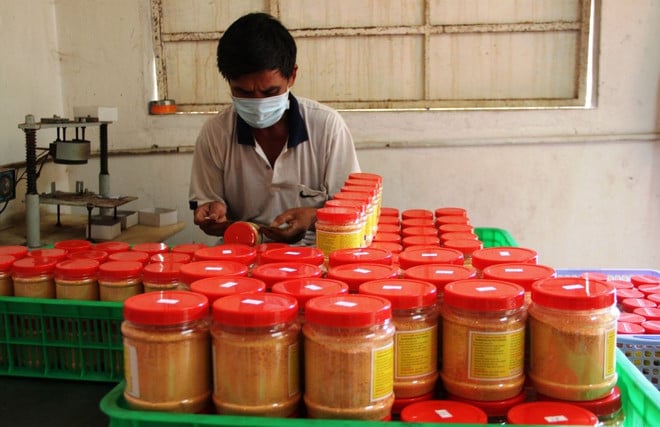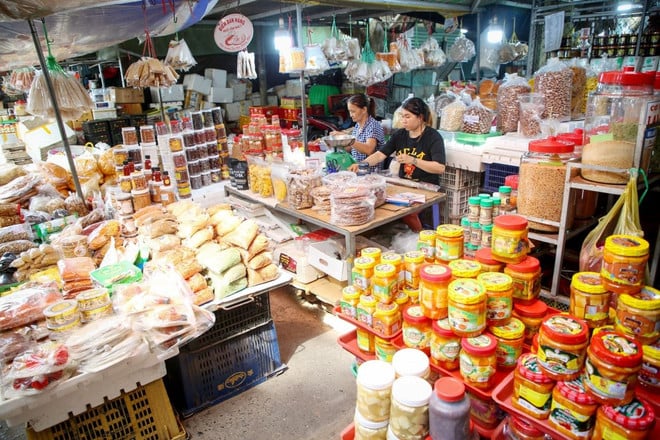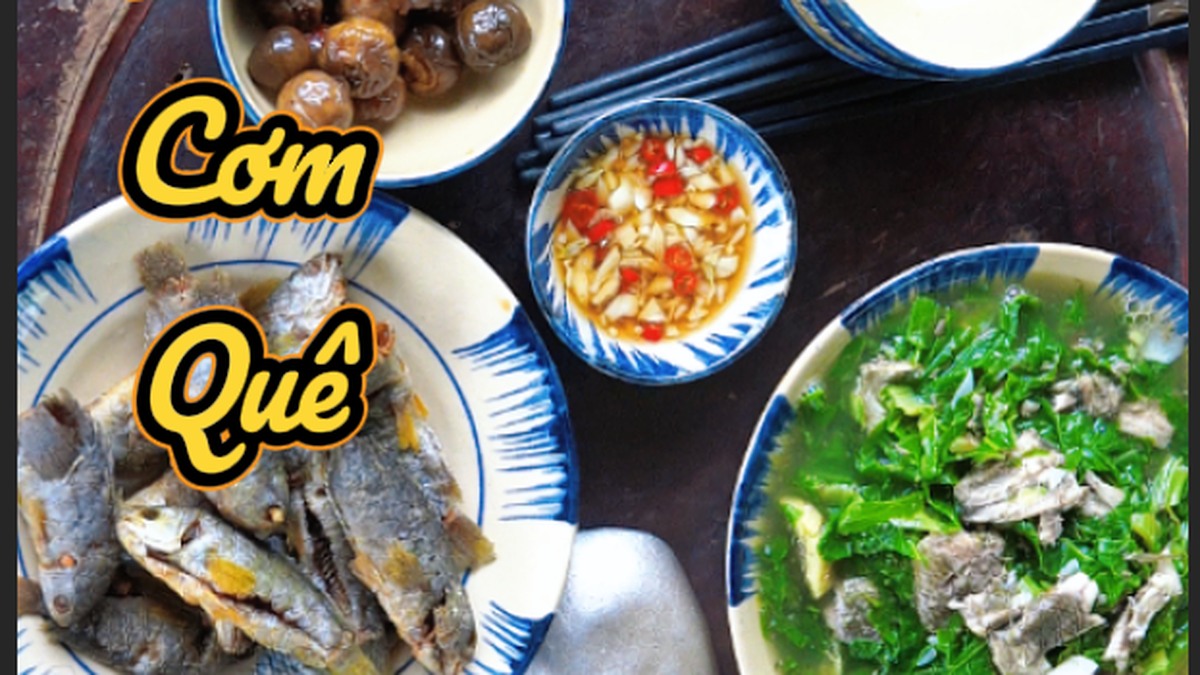Besides Trang Bang dew-dried rice paper, chili salt is a famous specialty of Tay Ninh province. The chili salt making profession in Tay Ninh province has been recognized as a National Intangible Cultural Heritage under Decision No. 230/QD-BVHTTDL dated February 14, 2023 of the Ministry of Culture, Sports and Tourism.
From rustic spice to culinary icon
The profession of making chili salt in Tay Ninh was born in special circumstances: during the resistance war against France and the US, when mothers and grandmothers in the rear processed chili salt and shrimp salt to supply the front lines.
Over time, this rustic spice has become a prominent specialty associated with local culinary culture, clearly demonstrating the creativity and sophistication of the people in the border region.
Not only stopping at culinary value, the profession of making Tay Ninh chili salt also deeply reflects the lifestyle, eating habits and community spirit. Passed down from generation to generation, the profession is preserved by the people themselves with a high awareness of preserving traditional culture.
To create its distinctive flavor, Tay Ninh chili salt is made from selected ingredients: pure coarse salt, spicy red chili, garlic, lemongrass, dried shrimp, carrots, sugar, MSG... depending on the type.
The coarse salt imported from the Mekong Delta provinces must be pure, free of impurities, and the chili must be deep red, moderately spicy, and aromatic.
The production process includes many meticulous steps: pre-processing, grinding, roasting or drying, sun-drying, irradiation with ultraviolet rays to sterilize and packaging.
Garlic and chili are washed, peeled, and stemmed. The coarse salt is carefully prepared, then the ingredients are mixed in a secret ratio and ground to create a uniform mixture.
The mixture is roasted in a hot pan or dried at 80-90 degrees Celsius for 12-15 hours to achieve the ideal dryness. After roasting, the salt is dried in the sun, then exposed to ultraviolet rays to sterilize and ensure hygiene.
The cooled salt is spread thinly to avoid clumping, then packaged as a finished product.
Shrimp salt and chili salt production process at a facility in Tay Ninh. (Photo: Le Duc Hoanh/VNA)
Tay Ninh chili salt is diverse in types, from shrimp chili salt, vegetarian salt (suitable for vegetarians following Cao Dai and Buddhist religions), lemongrass salt, to pepper salt. Rich flavors, from mildly spicy, salty to fragrant fried onions, satisfy all tastes.
Tay Ninh chili salt products are diverse with types such as: shrimp chili salt, vegetarian salt (for vegetarians following Cao Dai religion, Buddhism), pepper salt, lemongrass salt... The spiciness, saltiness and aroma are adjusted to suit the taste of domestic and foreign users.
Bringing traditional craft village products far and wide
The chili salt making profession in Tay Ninh province exists at two levels: household-scale manual production and modern industrial production facilities, supplying the domestic and export markets.
According to statistics from the Department of Industry and Trade of Tay Ninh province, in addition to large-scale chili salt production enterprises such as Tan Nhien, Dh foods, Nhu Y..., there are also more than 50 establishments and business households registering the Tay Ninh salt brand.
Many establishments achieve revenue from hundreds of millions to billions of VND per year, with export output up to 600 kg/month, mainly to the US, Malaysia and Asian markets.
With retail prices ranging from 80,000-250,000 VND/kg depending on quality, Tay Ninh chili salt is not only a culinary product but also a commodity with high economic value, contributing to increasing income for local people.
After being recognized as a national heritage, the chili salt making profession has attracted more attention from authorities at all levels and consumers. Tay Ninh province has actively integrated the development of the profession into the OCOP program (One Commune One Product), combined with industrial promotion and trade promotion policies to expand the market while preserving traditional elements.
Chili salt along with many Tay Ninh specialties such as chao taro and rice paper appear diversely on the market. (Photo: Giang Phuong/VNA)
Despite its strong development, the Tay Ninh chili salt making industry still faces a number of challenges such as brand protection, product quality control and food safety assurance. However, with the strong participation of the locality, along with the creativity and enthusiasm of the people, this traditional industry is facing many great opportunities to continue to develop sustainably and reach out to the international market.
The Tay Ninh chili salt making profession is a living testament to the creativity and enduring vitality of Vietnamese culinary culture. From rustic salt jars during the war, this product has spread far and wide, becoming a favorite specialty at home and abroad.
With proper preservation and development, Tay Ninh chili salt is not only the pride of local people but also a bridge to bring Vietnamese culture to international friends./.
(Vietnam+)
Source: https://www.vietnamplus.vn/dac-sac-nghe-lam-muoi-ot-tay-ninh-di-san-van-hoa-phi-vat-the-quoc-gia-post1046711.vnp






































































![[Photo] International community congratulates Vietnam on having more landscapes recognized as World Cultural Heritage](https://vphoto.vietnam.vn/thumb/402x226/vietnam/resource/IMAGE/2025/7/13/58ec71f73ae644bfb5bab9c99043bb7d)

































Comment (0)